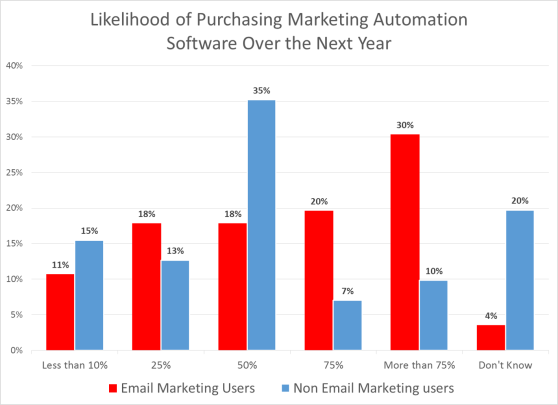If you own a marketing automation system, chances are you care most about features. But if you’re looking to buy a marketing automation system, chances are you care most about price.
That’s just one of insights in a new report from VB Insight on the expanding field of marketing automation. (VB Insight is VentureBeat’s research platform.)
 “That makes perfect sense,” report author Dan Freeman, the president of marketing consultancy Marketing Growth Strategies, said. “First-time implementers are just trying to do the nuts-and-bolts, simple stuff like landing pages or knowing who is visiting their website, while those who have been doing marketing automation for six months or a year are looking at the next stage … full nurture programs, automated workflows, and more.”
“That makes perfect sense,” report author Dan Freeman, the president of marketing consultancy Marketing Growth Strategies, said. “First-time implementers are just trying to do the nuts-and-bolts, simple stuff like landing pages or knowing who is visiting their website, while those who have been doing marketing automation for six months or a year are looking at the next stage … full nurture programs, automated workflows, and more.”
Current owners who are either adding to their system or switching to another rank features and ease of use as the most important parts of a system. New buyers who don’t currently use any marketing automation system, however, rank both total cost of service and monthly price above ease of use and price.
June 5th: The AI Audit in NYC
Join us next week in NYC to engage with top executive leaders, delving into strategies for auditing AI models to ensure fairness, optimal performance, and ethical compliance across diverse organizations. Secure your attendance for this exclusive invite-only event.
Get Freeman’s entire report, Buyers and Users Marketing Automation Survey, on VB Insight.
The two groups are looking for different functionality, and have different ideas about what to expect from their software, Freeman told VentureBeat.
“First-time buyers don’t know much about implementation … they kind of have in mind that the cost of the marketing automation effort equates to the cost of the software,” Freeman said. “But owners understand there’s more to it … both in costs and in returns.”
In fact, many of the new marketing automation buyers aren’t even doing email marketing or customer relationship management (CRM), which means they are fairly unsophisticated buyers.

Above: Email marketing users are much more likely to be in the market for marketing automation systems
That’s something the 70-plus marketing automation vendors will want to keep in mind — not just because new buyers have specific needs, but also (and maybe especially) because a big chunk of existing system owners are keeping their eyes open as well. As is well-documented, many companies use multiple marketing automation systems — and have a surprising openness to switching.
“That’s one thing that struck me about the results: Quite a few who have a system are looking to make a change,” Freeman said. “You would think there’s a little more stickiness, but it is pretty easy to change … and a pretty rapid payoff when you get a better system.”
The unsophisticated, new users could be well-served by some of the smaller marketing automation startups that have an all-in-one system with CRM-like components, Freeman said, while existing users could be better off looking for more established, full-featured systems.
In fact, there are two fairly standard paths for companies to follow here:
“There can be a progression from a starter system to a more sophisticated system,” he said. “But historically, the more natural progression has been from email marketing to marketing automation.”

